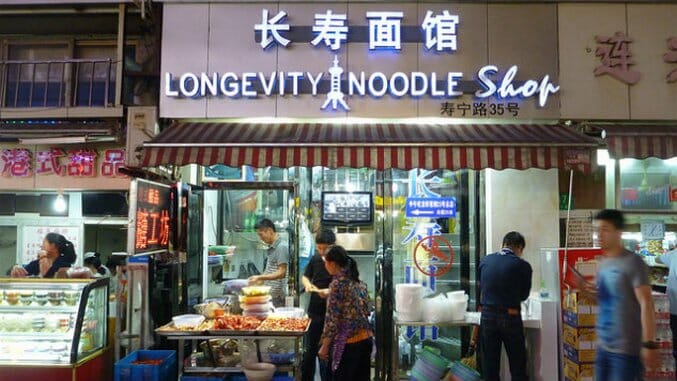Happy Birthday, Longevity Noodles
This birthday noodle dish has lived a long and celebrated life.

Birthdays were a pretty standard affair for me growing up, with one exception. Before cutting into the sponge cake with layers of whipped cream and fruit topping, my parents would cook up a bowl of golden egg noodles for dinner. Known as longevity noodles, they were chewy, hearty and satisfying.
Like in many Chinese households, much of the food I ate was often accompanied by a story or superstition. Eating fish on Chinese New Year’s Day would bring good fortune. Dumplings were served when someone was leaving town. And a bowl of noodles was a staple dish for every birthday.
I used to think these superstitions were simply cheesy jokes my dad made up to amuse us over the dinner table. But food has always been an important facet of Chinese culture and celebrations, and often serves as a metaphor for our aspirations, values, and beliefs. Longevity noodles were no different.
Longevity noodles are indispensable for birthdays and celebration feasts. Typically, the dish is only made with wheat noodles, because rice noodles are too delicate and break easily. You can use any kind of wheat noodle variety you like, dry or fresh. Preparation of the noodles also depends on your tastes. Some prefer to eat the noodles plain or put them in a soup, and some prefer to stir-fry the noodles with meat and vegetables.
Certain customs accompany the consumption of longevity noodles, depending on the region or household. For example, one custom has guests picking noodles from their own bowl and placing them into the bowl of the birthday honoree while wishing them fortune, happiness, and longevity. Another custom is to hold up noodles with chopsticks and admire how long they are with the other guests. There’s one custom that every household can agree on, however, and that is to never cut a strand of noodles — not unless you want to risk a shortened lifespan. In some areas, it is also considered a taboo to fill up noodles to the brim of bowl, as this would be equivalent to indicating a full lifespan.

-

-

-

-

-

-

-

-

-

-

-

-

-

-

-

-

-

-

-

-

-

-

-

-

-

-

-

-

-

-

-

-

-

-

-

-

-

-

-

-








































